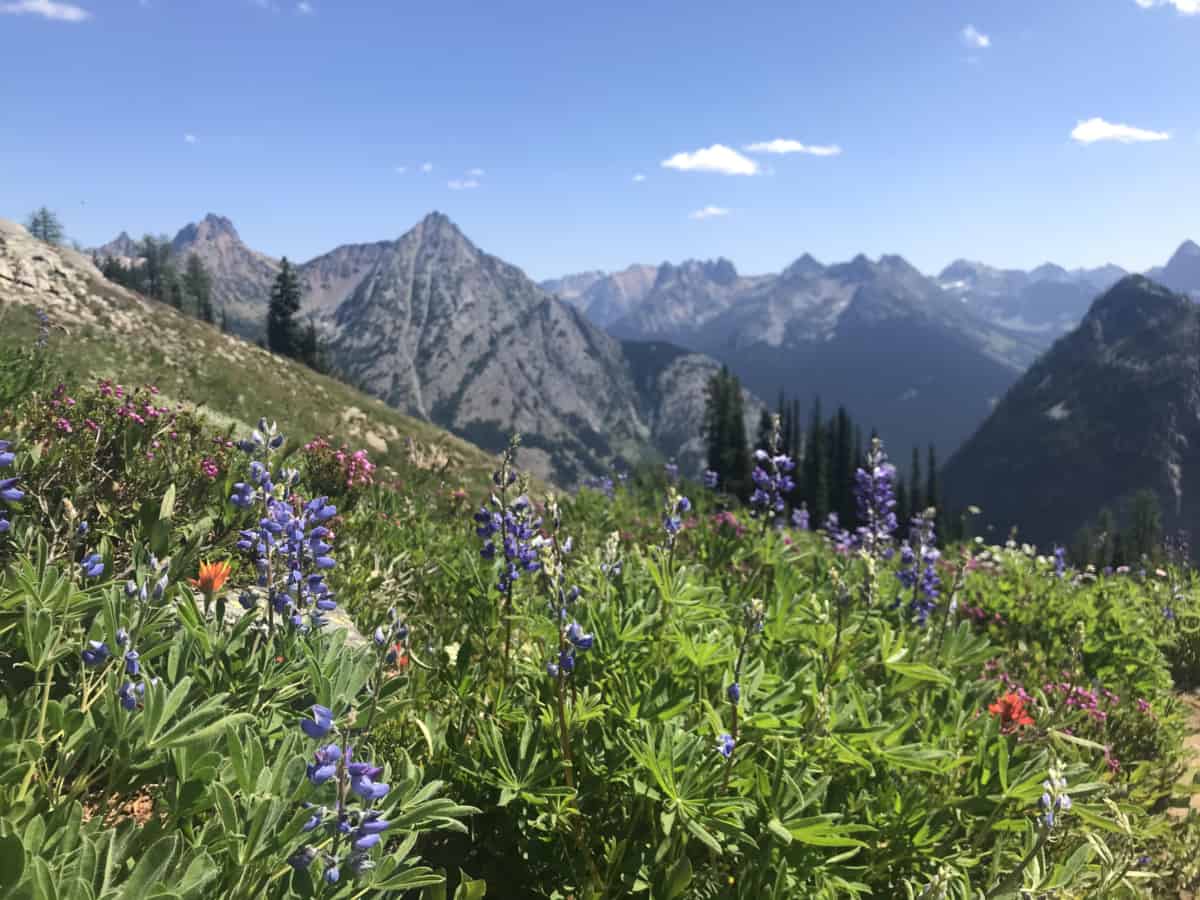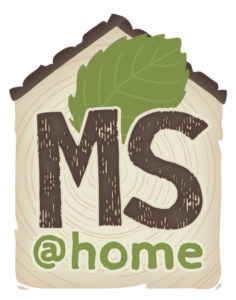
Mountain School @ Home Lesson 17: Inner & Outer Landscapes
 Students! Parents! Teachers! During this time of school closures and stay-at-home guidelines, North Cascades Institute is sharing lessons and activities from our talented Mountain School instructors. We hope these will inspire students of all ages to continue to learn about the natural world and discover new connections to the outdoors from home. This lesson was created by Senior Program Instructor Alexa Brandt. Find more lessons and activities on our blog or website.
Students! Parents! Teachers! During this time of school closures and stay-at-home guidelines, North Cascades Institute is sharing lessons and activities from our talented Mountain School instructors. We hope these will inspire students of all ages to continue to learn about the natural world and discover new connections to the outdoors from home. This lesson was created by Senior Program Instructor Alexa Brandt. Find more lessons and activities on our blog or website.
Get ready to exercise your creativity and observations skills as we explore external and internal landscapes, how they change over time, and how they can be connected.
What is a landscape?
What do you think of when you hear the word “landscape”? You may think of beautiful mountain scenery, horse pastures, or a zoomed out view of a river. For this lesson, a landscape is going to refer to the place that you are in or surrounded by. This means your landscape space does not even have to be outside and it includes all the living and/or non-living things that exist in it.
To get started, grab a writing utensil and a piece of paper and find a comfy, safe place to sit down that looks at the landscape around you. Reflect, discuss, or jot down some thoughts about the following questions:
What features (living or nonliving things) do you notice make up the landscape you are observing?
- Are the features natural or human-made?
- This could be mountains, furniture, bodies of water, buildings, trees, streets, power lines, or really anything!
How do these features interact with each other?
- Remember that we can observe interactions between things when we use our senses of sight, sound, smell, etc.
- What do you notice? Are there any interesting sounds?
- Are some features close or far away from each other?
- Do you notice any movement?
How do these features impact or change each other?
- Thinking about cause and effect (consider your observations above), how might these features change or influence the things around it?
How has this landscape changed over time?
- Use your best guess when thinking about changes that could happen over a long period of time (years and years) and small scale changes that happen over shorter periods of time (days, weeks, months).
- What do you think created those changes?
ART CHALLENGE:
Take a minute to sketch the landscape you are looking at. It doesn’t have to be perfect, just give it your best effort! If you don’t feel excited about drawing, try to create a representation of your landscape using various items found in nature (sticks, leaves, fir cones, etc.). Try to include the features as you noted above.
Below is an example of a landscape of Diablo Lake and the surrounding mountains, made using nature items: white rocks for Colonial and Pyramid Peaks, fir needles for the hillside, sticks for the boom, and wavy lines drawn in the dirt for the water.


And below is an example of a landscape of a house in the forest, created with nature items: leaves for the ground, sticks for the building, porch, and tree, and Douglas fir cones for the windows.

Seasons!
Alright, time to imagine the future! While looking at the scene in front of you, use the new lens of seasons to take in the landscape. (If you want to explore more about the study of seasonality, check out our Mountain School at Home Lesson 5: Tuning in to the Seasons with Phenology!) Reflect, discuss, or jot down some thoughts about the following questions:
What does your chosen place look like now?
- What season is it currently?
- How has the current season changed different aspects or features of your landscape?
What do you think this landscape would look like in autumn? In spring? In summer? In winter?
- What are some big differences or similarities?
- Consider changes in color, plant and animal life, human activity, water, etc.
What do you enjoy the most about the current season?
What are you most looking forward to most about the next season?
ART CHALLENGE:
Create a new version of your last work of art. This time, use your reflections from above to think about how this landscape might look different in the next season. For example, if it is currently winter, how might this landscape look different in the spring? Remember that you can do so by drawing, sketching, or using nature items around you.
Here is an example of the same Lake Diablo landscape as above but this time in spring and using traditional art supplies. Less snow and more vibrant colors!

Emotional Landscapes
Sometimes it can seem hard to find words to describe how you are feeling in a particular moment or time. One helpful way to process these feelings can be through nature and art. Similar to landscapes, feelings often change like seasons do. We are connected to the things around us and because of that, they can be helpful tools in recognizing how we are doing. Reflection and expression differs from person to person, give it a try!
STEP 1: To get started, brainstorm what feelings come to mind when you consider the landscape in front of you right now. Think about the colors, movement, and any other observations you’ve made about this place. What mood might it reflect? Why?
Add this brainstorm to the side of your drawing or write down these ideas on a sheet of paper if you created a scene with nature items.
STEP 2: Take a few minutes to journal and reflect on how you are feeling in this moment. If you don’t have specific words for your emotions, that is totally okay! Think of a nature scene that represents those feelings, even if they aren’t named. Spend a few minutes sketching, drawing, or constructing that scene. Label colors or add them in if you have colored writing utensils around you. Include a description of which landscape features resonate with you the most.
Landscapes are awesome because there can be so many things coexisting at the same time. Because of this, they can help reflect those moments when we are experiencing many emotions at the same time. This is normal and there is space for all of your feelings!
STEP 3: Challenge yourself by thinking about opposite feelings (compared to Step 2) you may have experienced before. Sketch, draw, or construct a landscape that represents those emotions. (If you need a place to start, check out this mood chart from SolutionsForaBetterDay.com or consider the following ideas: calm, frustrated, joyful, stressed, grateful, worried, hopeful, tired.) Add a brainstorm or a few key words for what feelings this landscape represents to you. If you are feeling motivated, continue creating emotional landscapes for different feelings you often experience.
ART CHALLENGE (by choice):
Share your emotional landscapes with someone you trust and care about. If this exercise was helpful for you, think about using landscapes to describe how you are feeling. They can be a helpful response when someone asks you how you are doing!
Here are examples of 3 emotional landscape possibilities for feelings of contentment, uncertainty, and resiliency.
Reflection Questions
Reflect, discuss, or jot down some thoughts about these questions:
- Do the landscapes around you influence emotions that you
experience? Why or why do you not think this is? - Do seasons influence your emotions?
What is an example of this? - How can we use these emotional landscapes to better
acknowledge our feelings and thought processes? - What is a place that gives you hope or joy?
EXTRA CHALLENGE: Consider drawing or journaling about your emotional landscape once a week, or even every day. If you don’t like drawing, you can always journal a description of the landscape you have in mind. After some time has passed, you can look through your emotional landscape journal entries and see if there are any patterns or reflections you have.
More Resources
- Inner Explorer @ Home App
- Harmony at Home Lessons
- SEL (Social Emotional Learning) Video Resources for Home
- SEL @ Home: Top Resources to Share With Families
- Mountain School @ Home Lesson 2: Tree Bud Journal
- Mountain School @ Home Lesson 5: Tuning in to the Seasons with Phenology
- Videos: Phenology in the North Cascades
Thank you for helping us offer these at-home lessons for transformative learning experiences in nature by making a gift at www.ncascades.org/give.

